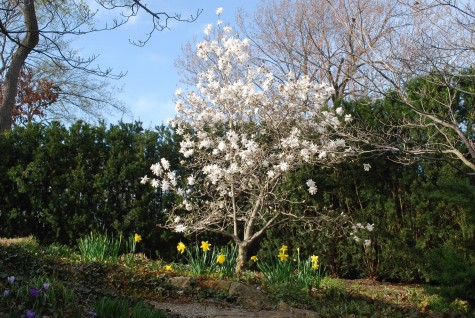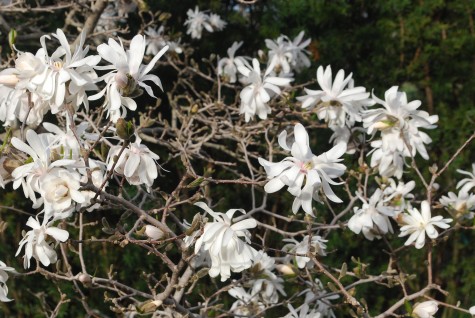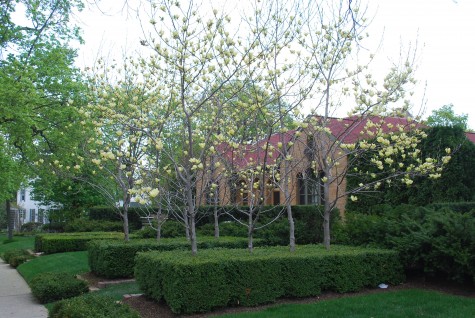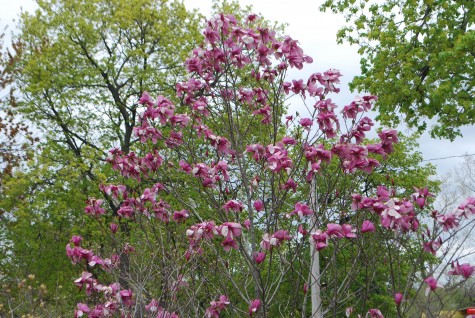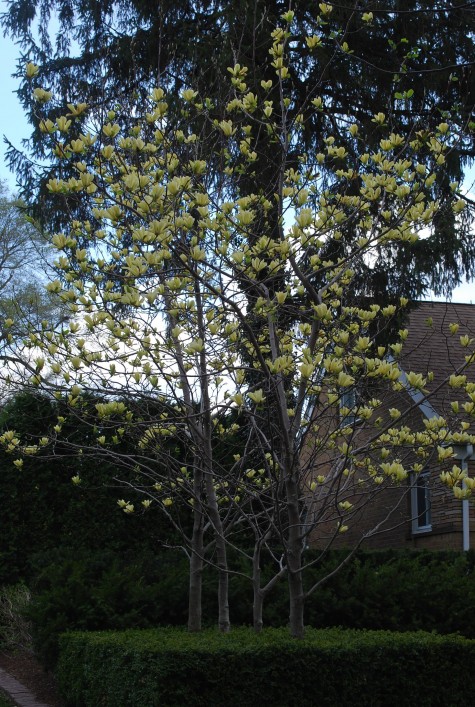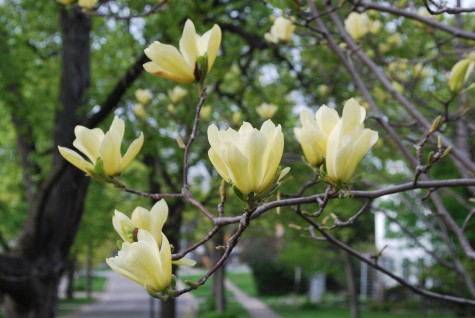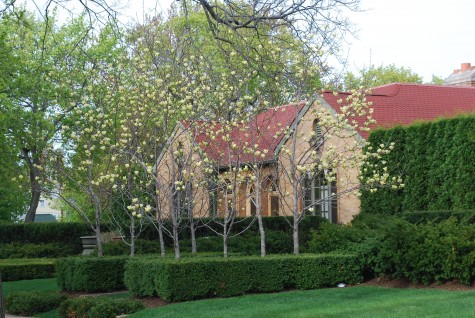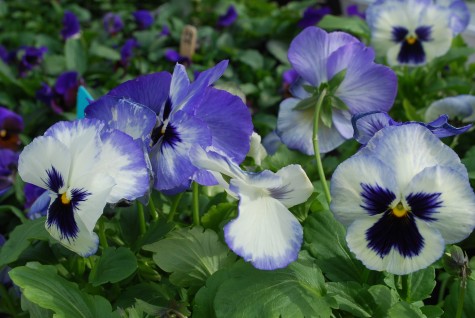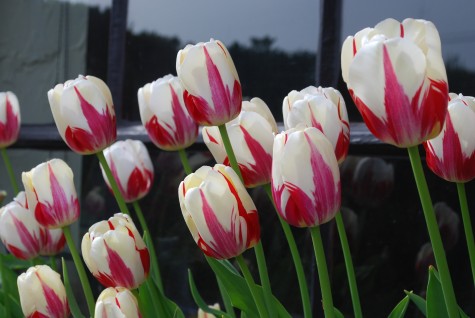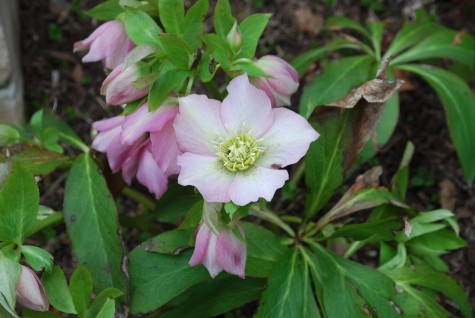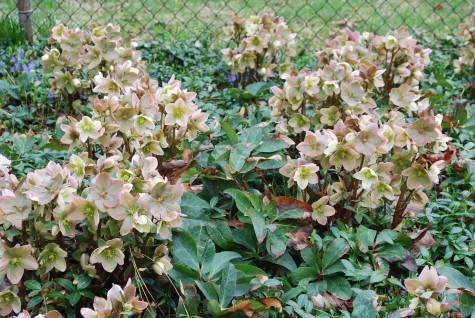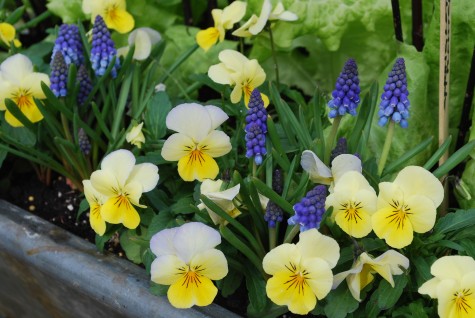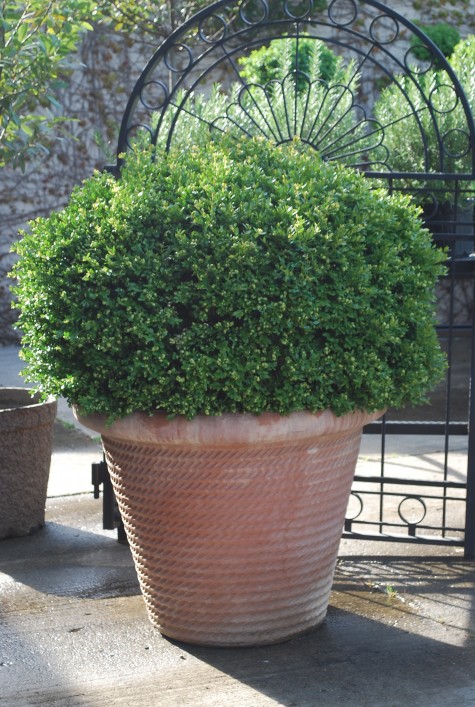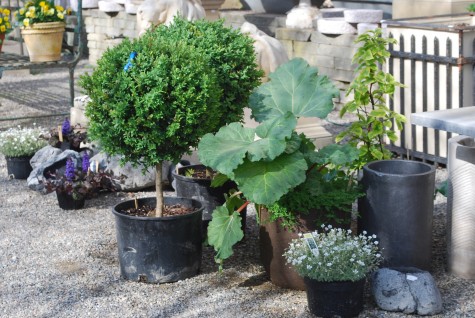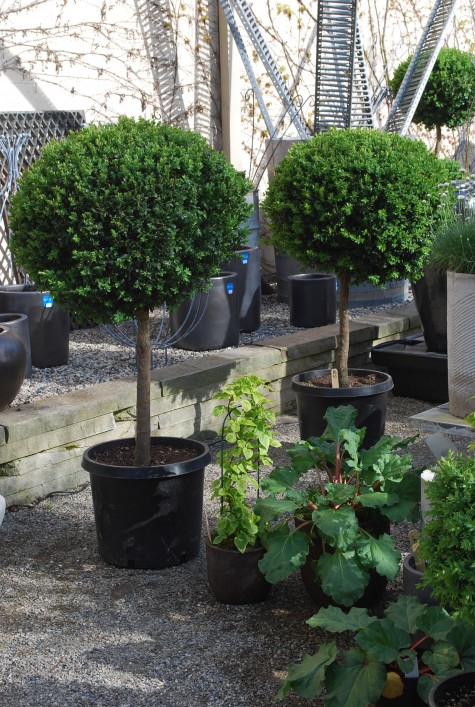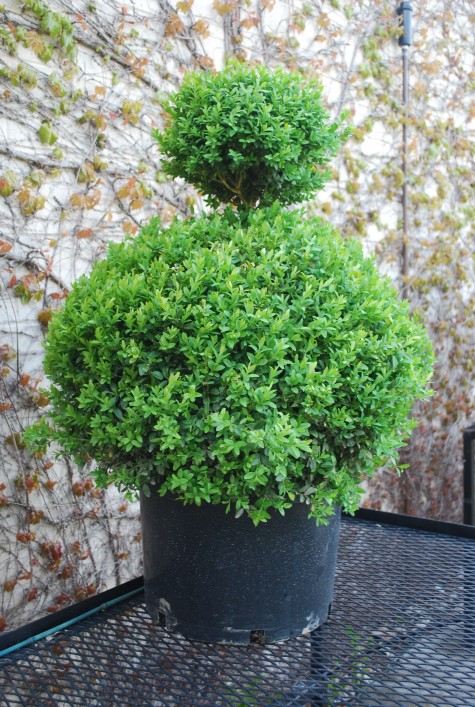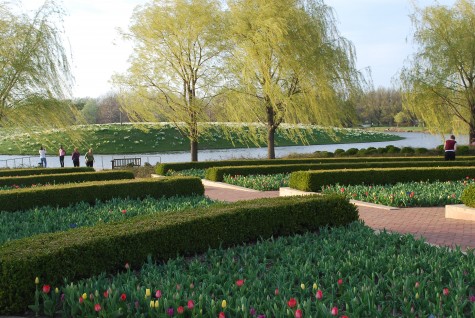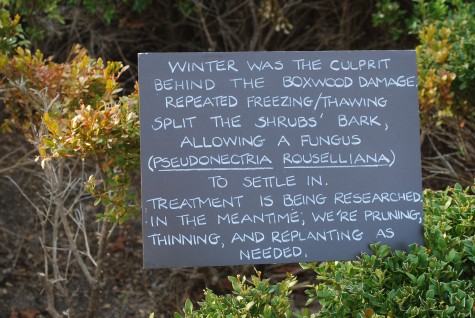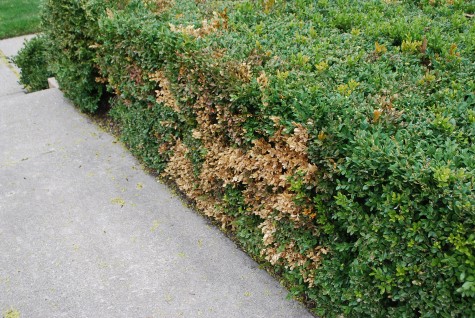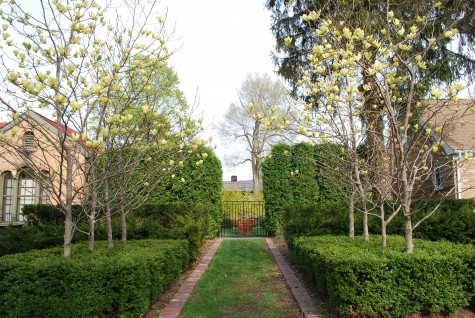I have a big love for magnolias; I would have any and all of them, if I could. I admire their big glossy leaves, and pale grey bark. Most zone 5 hardy magnolias top out at 25 feet; they are a perfect tree for a small property. Their spring flowers are strikingly large-and simply beautiful. Some years our spring is so short they might be in bloom only a few days; I do not fault them for this. Write a protest letter to Ms. Nature-should you have an inclination-but do not expect an answer. Zone 5 gardeners-we ought to be used to the slings and arrows of outrageous fortune-I am quoting Shakespeare here. No matter how many years in a row I would need to live through a late season killing frost, I would still plant magnolias. Magnolias are so beautiful in every other regard, I have no problem recommending them.
Magnolia Stellata, or star magnolia, and the saucer magnolia, Magnolia Soulangiana, are common to my area. They, and their progeny and hybrids, grace many a spring landscape in my city. Wada’s Memory, a hybrid of Magnolia Stellata, is a particularly beautiful white cultivar. Ivory Chalice, bred by Dr Leach from the species Magnolia Denudata, is exceptionally striking in a good year. It blooms early, and the blooming can be damaged by unexpected cold. Should you have Ivory Chalice on your property this year, I am sure you are dancing with delight. Plant this tree if you are a trouper gardener. Do not plant this tree if you live by your expectations.
But by far and away, my favorite magnolia is Yellow Butterflies. Bred by Phil Savage, a world renowned magnolia hybridizer, its fragrant pale yellow flowers are the best part of my spring landscape. He lived on a large property right on Woodward Avenue in Bloomfield Hills for many years. I met him in 1987 courtesy of Al Goldner, a noted landscape designer who mentored me for some years. Al was very interested that any designer first and foremost needed to learn as much as possible about plants. He was forever hauling his group to see this breeder, or that farm. It was an education bordering on priceless; I understand that now.
I have no photographs of Phil Savage’s property, but I can describe it. Magnolias towering at the better part of 50 feet tall were everywhere. Some were white, some were pink. Others were peach, or yellow, or bordering on orange-colors I had never seen before. Some trees with trunk calipers approaching 40 or 50 inches-magnolias grafted onto ash tree rootstock. The grafts were giant and incredibly sculptural. Visiting his property was like visiting another planet.
Just a few years ago, I visited his property again-courtesy of his niece-a client. He had passed away, and the property was for sale. She thought I might like to see the magnolias in bloom. What I saw there took my breath away. A lifetime devoted to growing trees was in evidence everywhere. Magnolias, and more magnolias. The size of his trees-like nothing I had ever seen. A giant forest of magnolias-imagine it. Most of these trees have never been introduced into commerce; the scientist and the dreamer had grown trees like I have never seen before or since. The property is pure magic.
The property was purchased from the family by a group intending to build a facility for the aged. His niece was concerned that many of his trees would be felled, destroyed, in that process. I did have GP Enterprises, who successfully moves big trees, look at the property. So many of the big trees were much too big to be moved. This was not so much comfort for her-she felt her Uncle’s work should be looked after, not cut down. I was powerless to do anything-this felt so bad.
Phil Savage’s most beautiful and well-known cultivar-Butterflies. This clear pale yellow flowering magnolia -I planted ten of them on either side of a walk to my back yard, and underplanted them with boxwood. They have been in 6 years now; this spring their blooming is heavy and gorgeous. A cross between the cucumber magnolia-Magnolia Acuminata, and Magnolia Denudata Sawada’s cream-it is exquisite in bloom, in leaf, in bark, and in habit. Every day for the last week, I pull up in front with the corgis in tow-and get out to take photographs. They lean out the rear window as if to ask-what are you up to? I am up to trying to capture the color, the shape, the fragrance-all those things that defy recording. No photograph could possibly do justice to how beautiful they are right now-come by if you can.
I know I posted a few days ago about how I wish Detroit had a botanic garden, and that in the event I decided for the first time to buy a lottery ticket, and won, I would put that money towards a botanic garden for my city. I could refine that dream. The group that bought the property-they have no plans to build over Phil Savage’s magnolias right now; their project is on hold. If I could, I would write them a check, and wave them off. I would make a botanic garden-presided over by the most singular and amazing magnolia grove it has ever been my privilege to see. I have my dreams, yes I do.
